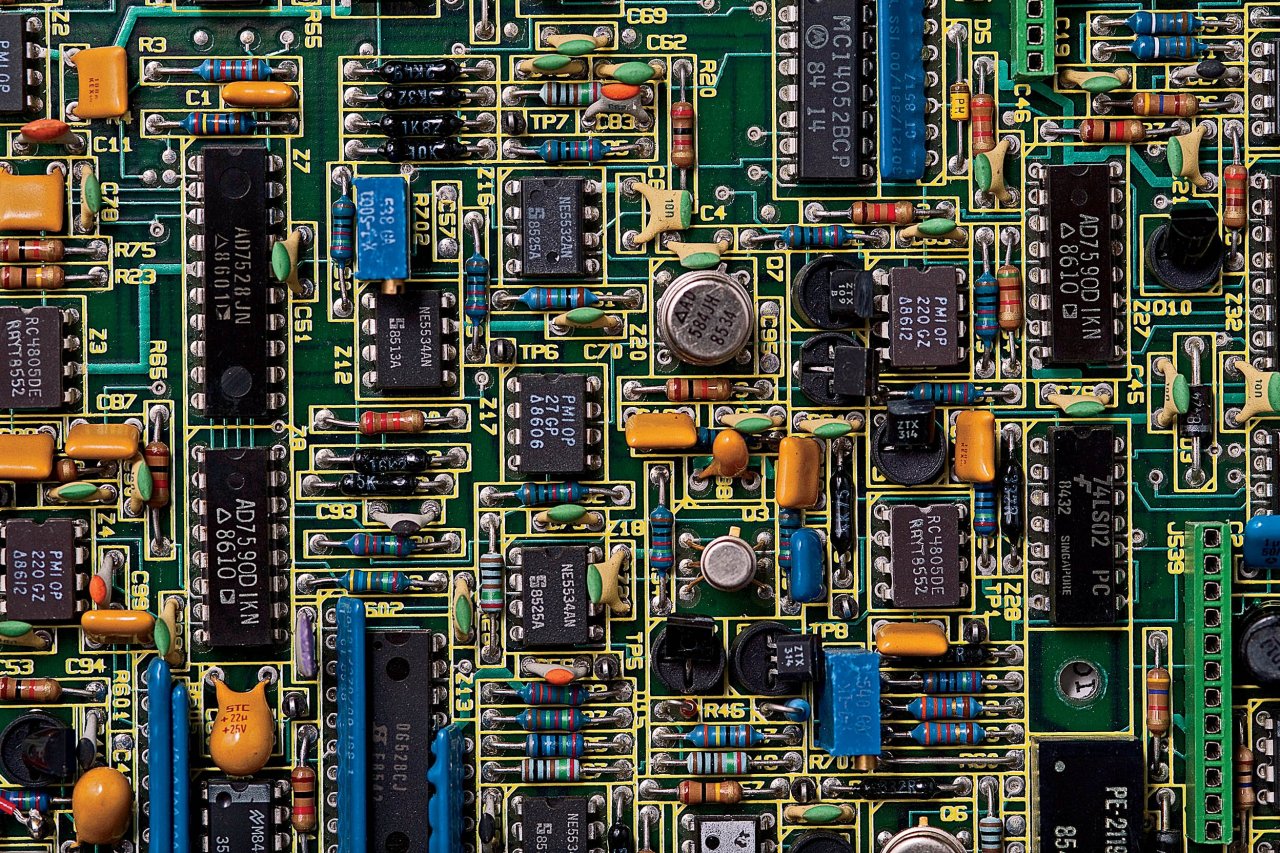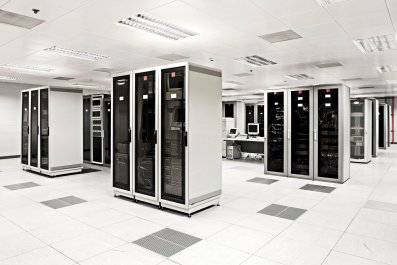Charge Pomeranchuk orders. Skyrmion lattices. Magnetic monopoles in spin ice materials.
That may sound like a sci-fi shopping list, but according to Malte Grosche, head of the Quantum Matter Group at the New Cavendish Laboratory in Cambridge, U.K., these are developments in quantum physics that could lead to game-changing technologies ranging from electric airliners to artificial intelligence.
History has marked key technology breakthroughs, from the Stone Age to the steam age, and since the 1960s we have arguably been living in the quantum age.
In the early years of the 20th century, scientists discovered that the world of the very small—atoms, electrons, photons—behaves differently than the everyday objects composed of these quantum particles. When we throw a tennis ball, with a little help from Newton, we can work out where the ball will end up. But send a quantum particle on its way, and, after time, all that exists is a set of probabilities showing where the particle might be. It's not just a lack of information. Strangely enough, until we actually make a measurement, the particle doesn't have a location. This allows quantum particles to behave as if they are in more than one place at a time, or pass through apparently impenetrable barriers, a process known as "quantum tunneling."
All that underscores the fact that quantum physics is often counterintuitive. The great American physicist Richard Feynman said that quantum theory "describes nature as absurd from the point of view of common sense."
But on the other hand, quantum physics works. And we know that because it's the basis of so much of today's technology.
At the most basic, almost everything we do is grounded in quantum physics—matter (all of it) is a collection of quantum particles, while light, electricity and magnetism are all quantum phenomena. At the next level are the quantum technologies we humans built without being aware of the physics that made them possible. When Swan and Edison produced electric lightbulbs, they didn't know that light generated from a heated filament is a quantum process—they ended up implicitly drawing on quantum physics without even knowing it.
Then there's a third level: Everything changed with the invention of the transistor, the electronic switch and amplifier that appear in billions of modern electronic devices. Invented by a Nobel Prize–winning team at Bell Labs, transistors incorporate materials that are specially developed to modify behavior at the quantum level. From then on, an explicit knowledge of quantum physics has driven countless practical developments.
It only takes a few minutes analyzing a smartphone to realize the pervasiveness of quantum technology. To start, quantum physics is required to construct any solid-state electronics—every chip inside your iPhone is packed full of quantum devices like transistors and has to be designed to encompass the peculiar quantum behavior of electrons. On top of that, your phone has a computer, display, touch interface, digital camera, light-emitting diode and global positioning system receiver—each developed as a result of our understanding of the field.
Take, for instance, the phone's memory. Computer memory is an array of tiny electrical charges, representing the ones and zeroes that make up the device's digital information. In a conventional computer these disappear when the machine is switched off, but the mobile phone's memory retains information even when the battery is dead. This "flash memory," also found in everything from digital cameras to memory sticks, would not be possible without the weirdness of quantum particles.
Flash memory is based on a special switch known as a floating gate transistor. The floating gate is a segment in which an electrical charge can be held totally isolated from the system. This charge represents the "zero" or "one" stored in memory. The charge held stays the same whether or not the transistor is connected to the power. If we think of the electrical charge as a little bucket of water, it is completely sealed in so the contents can't escape. But this also means that it should be impossible to discover what charge the memory holds, or to change it. In the bucket analogy, we can't see how much water the bucket has in it, nor can we add or take away water. It is only because electrons are quantum particles with diffuse locations—enabling them to tunnel through the insulator and respond to or change that stored charge—that flash memory can work.
Then there are lasers. Movie audiences first came across the (fake) deadly beam in the 1964 James Bond film Goldfinger, released just four years after American physicist Theodore Maiman produced the first working laser model. But in the real world, there are now lots of practical—and peaceful—laser applications. The laser and its familiar cousin the LED both produce light by using special quantum behavior, influencing the way electrons change levels in atoms to generate photons of light. To achieve its intense, monochrome output, a laser stimulates a collection of atoms into an energized state, and then triggers the release of this energy in a chain reaction that results in "coherent" light with each photon in step. This produces a precision beam, ideal for reading the tiny markings on CDs and DVDs, scanning bar codes at supermarket checkouts and making the minuscule cuts necessary in eye surgery.
More applications are on the horizon. CSR (which formerly stood for Cambridge Silicon Radio) is a British company specializing in innovative electronics, and it is working on quantum-based longer-lasting energy sources. "We are currently actively involved in designing Bluetooth Smart products for the 'Internet of Things,'" says David Vigar, the company's director. "These products need to run for their entire lifetime on single batteries. We use quantum physics to understand where leakage currents come from [to] reduce losses."
Another U.K. company, Eight19, has developed innovative solar cells on a flexible film using organic semiconductors, a development requiring in-depth knowledge of quantum effects. Semiconductors are the essential building blocks of electronic components like transistors, and a solar cell makes use of semiconductors that react to light in a quantum process that produces a flow of electrons—an electrical current. Usually semiconductors are made from rigid materials like silicon, but organic semiconductors are much more flexible, plastic-like materials.
"The fundamentals of [our cells'] behavior at a quantum level is different from traditional solar cells. An Eight19 solar cell has an active stack less than a micron thick—a human hair is 70 microns across. Traditional silicon solar cells have very much higher thickness and are very energy-intensive in their manufacture," says Eight19's Jurjen Winkel.
Meanwhile, at Cambridge University, the Quantum Matter Group works at the quantum level to change the mix of materials available to manufacturers that could be used for anything from electronics to optics. As the group's Malte Grosche points out, the 100 or so known chemical elements can be combined to make a whole host of compounds. "Pick four elements from the periodic table, and you can make about 100 million materials. As there is a near-infinite variety of ways elements can combine, there appears to be also a very wide variety of ways the electrons can organize themselves in response to the underlying principles of quantum mechanics."
In familiar materials this electron organization produces effects like magnetism and superconductivity—but there are new states—with exotic names like charge Pomeranchuk orders, skyrmion lattices and magnetic monopoles in spin ice materials—to be investigated that could inspire new electronic devices.
The key to future innovation, many believe, will be lower temperatures.
Quantum effects become far more apparent at extremely low temperatures. When an electricity conductor is brought near to absolute zero, –459.67 degrees Fahrenheit, it is as if the electrons carrying the electrical current no longer meet any resistance. Traditional electrical theory goes out the window. Such "superconductors" make it possible to generate otherwise impossibly powerful magnets and tiny Squids (Superconducting Quantum Interference Devices), which act as incredibly sensitive magnetic detectors.
In specialized areas, superconductors are already widely used. There are superconducting magnets in the Large Hadron Collider and in the medical world's best imaging device, the magnetic resonance imaging (MRI) scanner. This is a doubly quantum device that uses superconducting magnets to flip the spin of atoms inside the body, and then monitors the quantum effects of this flip to generate the image. Superconducting magnets have also been used in levitating trains, which float just above the track and can reach speeds of more than 360 miles per hour.
But you aren't going to find any superconductors in your home—yet. Keeping anything a few degrees above absolute zero is hard work, requiring specialist equipment and expensive liquid helium. But the dream is to make superconductivity possible at room temperature. To this point, the best scientists can do is –238 degrees Fahrenheit. But they are getting closer and closer.
"I am convinced there must be room temperature superconductors out there; maybe they are already in some chemist's sample cupboard," says Grosche. Once researchers harness the power of those superconductors, everything could change.
New quantum materials could transform battery technology, making electric cars the norm and giving the hundredfold increase in capacity needed to make electric airliners feasible. They could provide the mechanism to beam solar power from space-based stations down to Earth (solving our reliance on fossil fuels) or to transform the speed with which we can manipulate vast quantities of information, enabling computers to rival the human brain. The quantum revolution could create anything from invisibility cloaks to Star Trek–style medical sensors—or even more fantastic advances.
"The next big thing is unlikely to be anything we can imagine now," says Grosche. "When scientists first investigated the electron, only the most enthusiastic would have thought of practical applications. Just a few decades later, there was already an industry built on vacuum tubes."






























